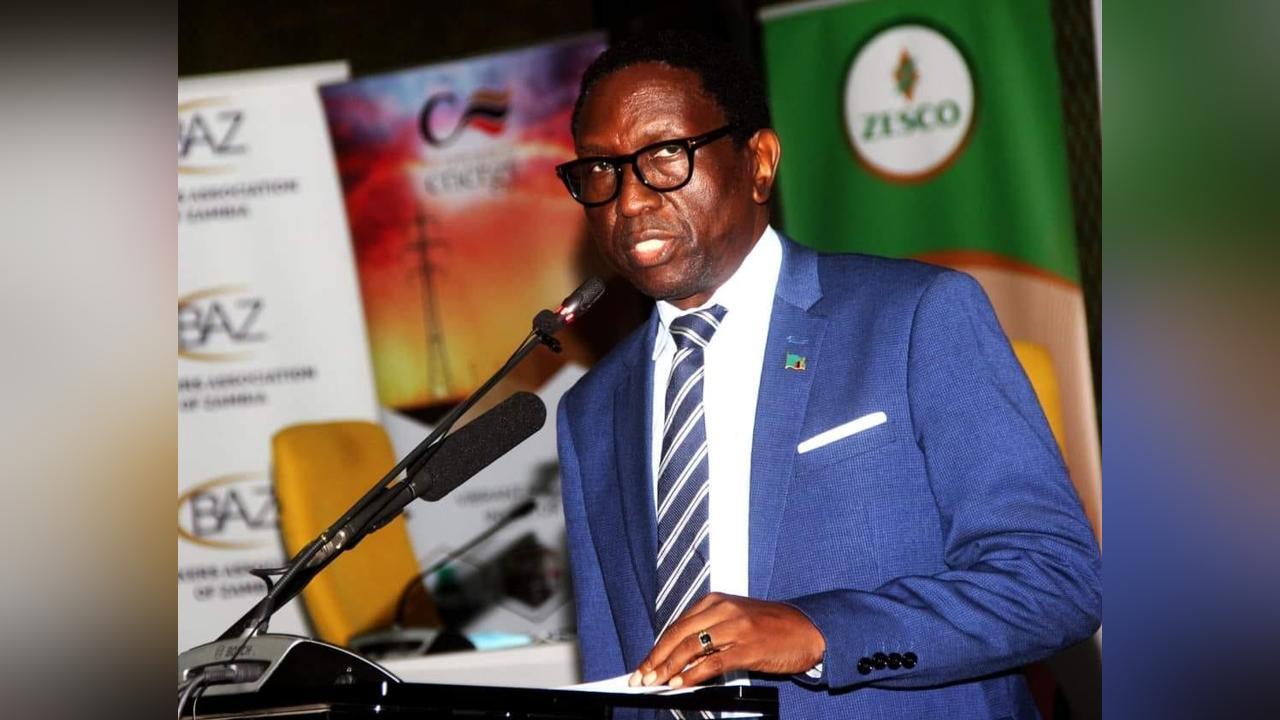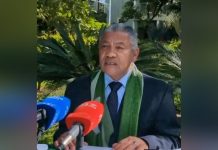Africa-Press – Zambia. Today, Minister of Energy Peter Kapala updated the nation on the current electricity situation in the country and outlined the measures being implemented by Government to mitigate the impact of reduced electricity supply on the Zambian economy.
Here are the highlights from a ministerial statement. Currently, the Country’s installed electricity generation capacity stands at 3,777.3 Mega Watts (MW) with hydropower accounting for 85 percent and the current peak demand is estimated at 2,400 Mega Watts.
The planned load management has been caused mainly by forecasted insufficient generation capacity due to reduced water levels in the country’s major reservoirs following below-normal rainfall patterns experienced during the 2023 to 2024 season due to the El Nino drought phenomenon. This is also attributed to increased demand which has been growing at about 150 – 200 Mega Watts per annum.
The El Nino-induced drought has caused a significant impact on the region’s rainfall pattern. Zambia in particular, has experienced a severe decline in rainfall, with the Zambezi and Kafue River basins, which are the major water catchments for hydropower generation dams in Zambia, being significantly affected.
The Kariba North Bank power plant depends on water from the Kariba Dam Lake reservoir for its generation. For the year 2024, only 8 Billion Cubic Meters (BMC) has been allocated to Zambia for power generation due to the forecasted low rainfall pattern and this entails that the power plant can only generate up to 214 Mega Watts out of an installed generation capacity of 1080 Mega Watts.
Additionally, there has been a marked reduction in the level of rainfall received on the Kafue River basin in the 2023-2024 rainy season and according to the data at gauging point, water inflows have decreased by 50 percent compared to the 2022-2023 rainy season as well as to other Long Term Mean flows.
This will further lead to a constrained generation from the cascaded power plants on the Kafue River basin, that is the 120 Mega Watt Itezhi Tezhi Hydropower Plant, the 990 Mega Watt Kafue Gorge Power Station and the 750 Mega Watt Kafue Gorge Lower Power Station.
It is worth noting that the forecasted reduction in the water levels due to the El Nino drought, characterised by a reduction in hydropower generation and the growing electricity demand will result in a power deficit of about 430 Mega Watts.
In implementing the load management programme, ZESCO has been directed to consider the vital role played by strategic institutions such as health facilities, water utilities, industry and mining firms and security wings.
✅The load management programme will endeavour to exempt strategic institutions, where dedicated lines exist. This exemption will ensure that sensitive and critical institutions can continue to provide essential services to the communities without disruption.
In order to reduce rapid drawdown of the reservoir levels that could lead into longer hours of load shedding, ZESCO has commenced load shedding. As a result of the load management and load shedding, ZESCO will lose approximately USD 35 million monthly.
The Government has noted the need for a lasting solution that fosters the provision of affordable and sustainable energy services. In this regard, the following measures have been formulated: SHORT TERM MEASURES.
(a) ZESCO is currently importing between 50MW to 90MW between 21 Hours and 05 Hours and is actively engaged in negotiations with Mozambique for an increase in firm power imports for an additional 120MW.
(b) ZESCO plans to gradually withdraw 120MW from the export market taking into consideration the current bilateral contracts. This plan is scheduled to run from February 2024 to December 2024. However, it is worth noting that this plan will translate into a revenue loss of US Dollar 110 million.
(c) Ndola energy power plant has a capacity of 105MW. Currently, ZESCO and Ndola Energy Company Limited (NECL) are undertaking negotiations with a view to restarting the power plant. These negotiations are expected to be completed by April 2024 after which ZESCO will purchase 105 MW from May to December 2024.
(d) The government, through ZESCO, is developing a 100MW Solar PV power plant in Kabwe. The project is underway with a scheduled duration of 10 months, aiming for completion and commissioning by the end of the year.
MEDIUM TERM PROJECTS Renewable Energy Expansion: 120 MW Solar PV Portfolio: Implementation of a 120 Mega Watt portfolio of solar PV power projects under the Global Energy Transfer Feed-in Tariff (GET-FiT) program.
Luapula (CX) Hydropower Project: Progressing with the development of the 271-megawatt Luapula (CX) hydropower project on the Luapula River. Lusiwasi Lower Hydropower Project: Development of the 86 Mega Watt Lusiwasi Lower Hydropower Project.
2,000 MW Solar PV Project: ZESCO is collaborating with Masdar on a 2,000-megawatt solar PV project.
Regarding the strategic programmmes and long-term projects, Government completed the development of the first Integrated Resource Plan (IRP) aimed at providing a lasting solution to Zambia’s challenges in the electricity sector.
The Integrated Resource Plan (IRP) is a roadmap for the sustainability of the electricity sector. It outlines a strategy for addressing these challenges through the implementation of sustainable solutions.
Additionally, it projects a need for additional generation capacity of 6,505 megawatts (MW) by 2026, requiring an estimated investment of USD 4.984 billion. To meet long-term demand, the IRP forecasts a total of 23,193 MW by 2050, with a corresponding investment requirement of nearly USD 31 billion.
The Minister of Energy further encouraged consumers to consider transitioning to alternative energy sources such as gas stoves, solar water heaters, and the adoption of efficient energy equipment such as energy-efficient bulbs to reduce on power consumption. This shift is anticipated to contribute to a reduction in the energy deficit.
For More News And Analysis About Zambia Follow Africa-Press







